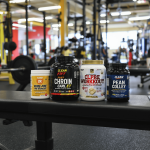Dive into the world of whey protein and discover its crucial role in muscle growth and recovery. This comprehensive guide explores the science behind whey protein, its impact on enhancing muscle synthesis, recovery, and overall performance, offering practical tips to integrate it into your diet effectively.
Whey protein is recognized as a powerhouse supplement in the fitness world, often celebrated for its ability to support muscle growth and recovery. But what is it about whey protein that makes it so effective? The answer lies in its composition and the biological processes it influences in the body.
The Science Behind Whey Protein
Whey protein is derived from milk during the cheese-making process. It contains all nine essential amino acids, making it a complete protein source. These amino acids, particularly leucine, play a crucial role in muscle protein synthesis (MPS), which is a critical process for muscle growth and repair. When you consume whey protein, it is rapidly digested and absorbed into the bloodstream, where these amino acids are transported to muscle tissues to promote recovery and growth.
Furthermore, whey protein has a high biological value (BV), a measure of how efficiently the body can utilize a protein source. With a BV higher than most other protein sources, whey is ideal for supporting muscle repair and growth swiftly and effectively.
Enhancing Muscle Synthesis and Recovery
Consuming whey protein post-workout can significantly enhance muscle synthesis. After exercising, your muscles are in a state of repair and growth, and they require a steady supply of amino acids to facilitate this process. Whey protein ensures that your muscles receive the nutrients they need to rebuild stronger and more resilient.
Moreover, whey protein’s ability to boost recovery means that you can return to training sooner and more effectively. Reduced muscle soreness and quicker recovery times not only improve consistency in training but also enhance overall performance capabilities.
Practical Tips for Integrating Whey Protein
To harness the full potential of whey protein, it is essential to integrate it strategically into your diet. Here are some practical tips:
- Timing is Key: Consume whey protein within 30 minutes after your workout to maximize muscle protein synthesis and recovery. This timing ensures that your muscles receive the amino acids they need when they are most receptive.
- Daily Protein Goals: Aim to meet your daily protein requirements by incorporating whey into meals or snacks. Whether added to smoothies, yogurt, or even baked goods, whey protein can easily fit into various dietary preferences.
- Choose the Right Type: Select the type of whey protein that best suits your needs. Whey protein isolate is an excellent choice if seeking a low-fat, low-carb option, while whey concentrate provides a balanced approach with slightly higher caloric content.
Improving Overall Performance
In addition to muscle synthesis and recovery, whey protein supports overall athletic performance by maintaining lean body mass and promoting fat loss. By ensuring adequate protein intake, you safeguard the muscle you’ve worked hard to build, enabling more effective performance in activities and exercises. This preservation of muscle mass, combined with a structured workout routine, can lead to increased strength and endurance over time.
Final Thoughts
Whey protein is more than just a supplement; it is a vital tool in the arsenal of any fitness enthusiast looking to enhance their physical performance and body composition. By understanding the science behind whey and strategically incorporating it into your diet, you can optimize your muscle-building efforts and fuel your fitness journey with confidence and clarity. Whether you are a seasoned athlete or new to the world of fitness, whey protein offers benefits that cater to all levels of performance and ambition.




